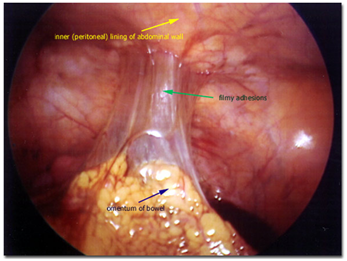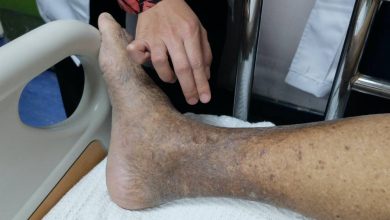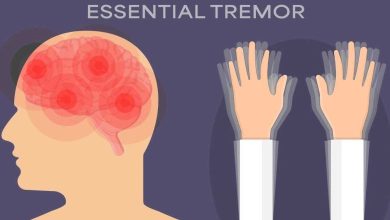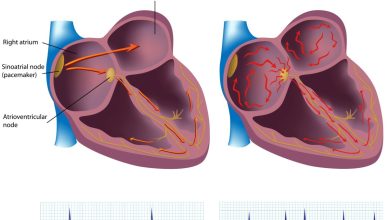Abdominal Adhesions Causes, Symptoms, Diagnosis and Treatment

What is Abdominal Adhesions?
Abdominal adhesions are bands of scar tissue that form between the organs in your belly and pelvis. Mainly, they form between loops of your small intestine. They can also form between an organ and the wall of your abdominal cavity.
Your abdominal cavity contains your:
- Digestive system, including your stomach and intestines.
- Female reproductive organs.
- Kidneys and adrenal glands.
- Liver.
- Pancreas.
- Spleen.
Adhesions occur when there’s injury or inflammation in your abdomen. They can even form from normal handling during surgery. In fact, they’re most common after abdominal surgery. As a natural part of healing, scar tissue forms that can cause tissues to stiffen and stick together (“adhere”).
How common are abdominal adhesions?
Abdominal adhesions are the most common consequence of having surgery on your abdomen. The majority of people develop adhesions after abdominal surgery. But most people don’t need Treatment for Abdominal Adhesions unless they’re experiencing symptoms.
Adhesions are also the most common cause of a small bowel obstruction. A bowel obstruction is a medical emergency that involves complete or partial blockage in your intestines.
Related article: What is Infected Abdominal Adhesions: Natural Treatment
Symptoms of Abdominal Adhesion
Most adhesions don’t cause symptoms. Sometimes, though, abdominal adhesions can cause your intestines to twist, similar to how a garden hose can become kinked. This can occur shortly after or even years after surgery and lead to a small bowel obstruction.
With obstruction, food, liquid, air and waste can’t pass through your intestines. You may notice symptoms such as:
- Severe abdominal pain.
- Cramping.
- Bloating.
- Nausea and vomiting.
- Abdominal distension (when your abdomen swells outward).
- Obstipation (being unable to pass gas or poop).
Get to an emergency room (ER) immediately if you’re experiencing symptoms of a small bowel obstruction. It can be life-threatening without emergency care.
Causes of Abdominal Adhesion
Abdominal adhesions form after your body repairs injured tissue inside your abdominal cavity. They’re like internal scars. If an organ or tissue inside your abdominal cavity is damaged, your immune system triggers inflammation to heal the tissue. As part of the healing process, the damaged tissue forms scar tissue.
Unlike the scars that form when you skin your knee, adhesions in your abdomen don’t peel and fade as if they were never there. Instead, damaged surfaces can stick together.
Approximately 75% of diagnosed adhesions form as a result of abdominal surgery. But they can form in response to any injury, condition or treatment that causes inflammation in your abdomen, including:
- Abdominal or pelvic infections.
- Appendicitis.
- Crohn’s disease.
- Diverticulitis.
- Endometriosis.
- Pelvic inflammatory disease (PID).
- Radiation therapy to your abdomen (cancer treatment).
- Peritoneal dialysis (kidney failure treatment).
What are the risk factors?
The biggest risk factor associated with abdominal adhesions is abdominal surgery, especially:
- Open surgery (laparotomy). Abdominal adhesions occur in more than 90% of open surgeries. An open surgery involves a single large incision. Abdominal adhesions are slightly less common with laparoscopic surgery.
- During laparoscopy, surgeons operate through a few small cuts instead of one large one.
- Surgery on organs in the lower part of your digestive system, including your colon and rectum.
- Multiple abdominal surgeries.
- Emergency surgery.
What are the complications of abdominal adhesions?
Most adhesions don’t cause problems. But when they do, the complications can be serious.
Complications include:
- Small bowel obstruction: The scar tissue can cause loops of small bowel to twist or narrow, resulting in a blockage. Without emergency treatment, an obstruction can lead to a life-threatening infection called peritonitis.
- Chronic pain: Adhesions can prevent your organs from moving around freely. This may cause long-term visceral pain in your pelvis or abdomen.
- Infertility: Adhesions can lead to infertility. The scar tissue can prevent eggs and sperm from meeting so that conception can happen. Scar tissue inside your uterus can prevent a fertilized egg (embryo) from implanting. Adhesions inside your uterus are called intrauterine adhesions or Asherman’s syndrome.
How are Abdominal Adhesions Diagnosed?
Your healthcare provider will ask about your symptoms and medical history. Symptoms like abdominal pain and a history of abdominal surgery may cause your provider to suspect adhesions.
Imaging technology can’t detect abdominal adhesions. But these studies can detect intestinal blockages that may be related to adhesions.
- X-rays and CT (computed tomography) scans of your abdomen can show blockages in your small intestine. A CT can show how severe the obstruction is.
- A hysterosalpingogram (HSG) can show blockages in your uterus or fallopian tubes.
Surgery is the only way to know for sure if you have adhesions.
Treatment of Abdominal Adhesions
Most adhesions don’t cause symptoms or require treatment.
Also, additional surgeries cause more adhesions. Think of it this way. Your surgeon can cut bands of tissue that are stuck together so that they become “unstuck.” But as soon as the operation is done, there’s no way to prevent the tissue from sticking together again.
For that reason, your healthcare provider will likely avoid surgery unless there’s a major medical problem that needs to be fixed, like a bowel obstruction. You may also need surgery to remove uterine adhesions that prevent you from getting pregnant.
Related article: What is the best Pain Relief for Abdominal Adhesions
What is the outlook for people with Abdominal Adhesions?
You may have extensive abdominal adhesions and never have any symptoms at all. But you may need surgery if you have repeated bowel obstructions or a complete blockage.
Do abdominal adhesions ever go away?
Some abdominal adhesions improve on their own over time. And unless they’re causing problems, healthcare providers usually choose to avoid removing them.
But sometimes, surgery is necessary, despite the risks of developing more adhesions. Your healthcare provider can help you weigh the pros and cons based on your symptoms.
Can you Prevent Abdominal Adhesions?
There’s nothing you or your surgeon can do to prevent abdominal adhesions.
However, adhesions are less common with laparoscopic surgery because of the smaller cuts. Increasingly, surgeons choose laparoscopic surgery over open surgery for many abdominal procedures.
Your surgeon may also place barriers between tissue surfaces during surgery to prevent scar tissue from causing them to stick together. These barriers come in solid, liquid, gel and spray forms that dissolve in your body. Still, even with barriers, scar tissue is an unavoidable part of the healing process.
Research is ongoing to locate solutions that can reduce scarring that leads to complications.
What is the best pain relief for abdominal adhesions?
Your healthcare provider may recommend over-the-counter (OTC) pain medications. Or, they may refer you to a pain specialist if you have painful abdominal adhesions.
Some studies suggest that a form of physical therapy called soft tissue mobilization can help reduce adhesion-related pain. More research is needed to understand the potential benefits of this therapy.
How do you break up scar tissue in your stomach?
The only way to break up the scar tissue is through surgery to remove the adhesions. Your healthcare provider will talk you through the potential benefits and risks of surgery based on your symptoms.
What foods should I avoid if I have adhesions?
There aren’t “bad” foods you should avoid if you have adhesions. If you have a partial bowel obstruction, your provider may recommend you eat soft foods or foods low in fiber. These foods can pass through your intestines more easily.
When should I seek care?
Contact your healthcare provider if you’re experiencing unexplained abdominal pain or if you’re having trouble pooping or passing gas. You may have adhesions or a partial bowel obstruction.
A complete bowel obstruction is life-threatening. If you experience any of the following symptoms, seek emergency medical attention immediately:
- Severe abdominal pains or cramps.
- Significant abdominal (belly) swelling or bloating.
- Nausea or vomiting.
Reference: https://my.clevelandclinic.org/health/diseases/15254-abdominal-adhesions
By : Natural Health News




